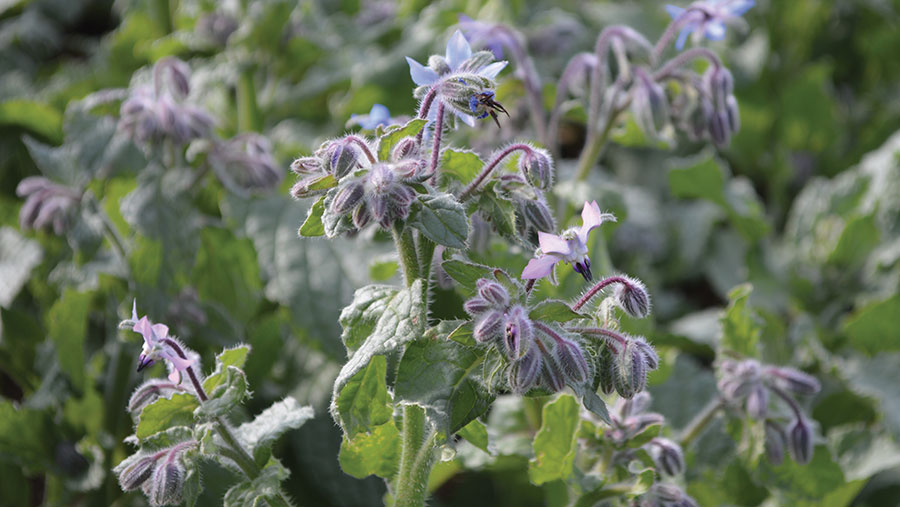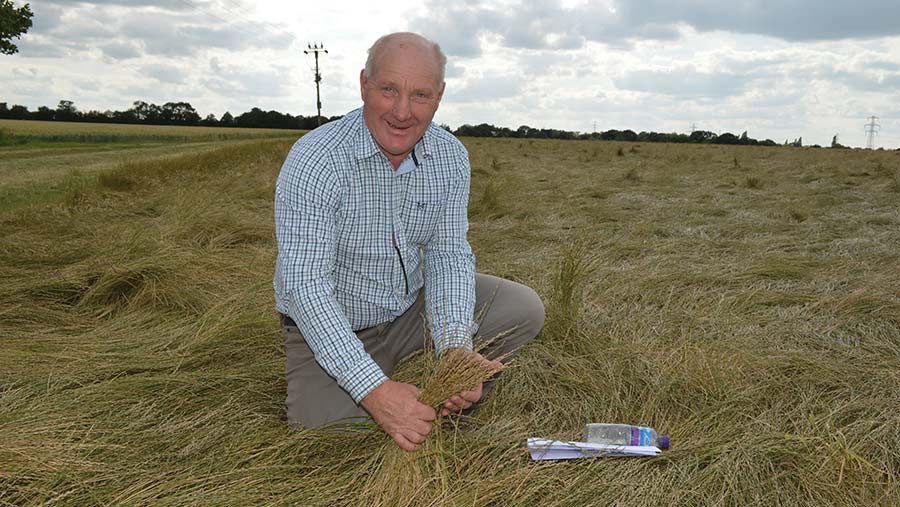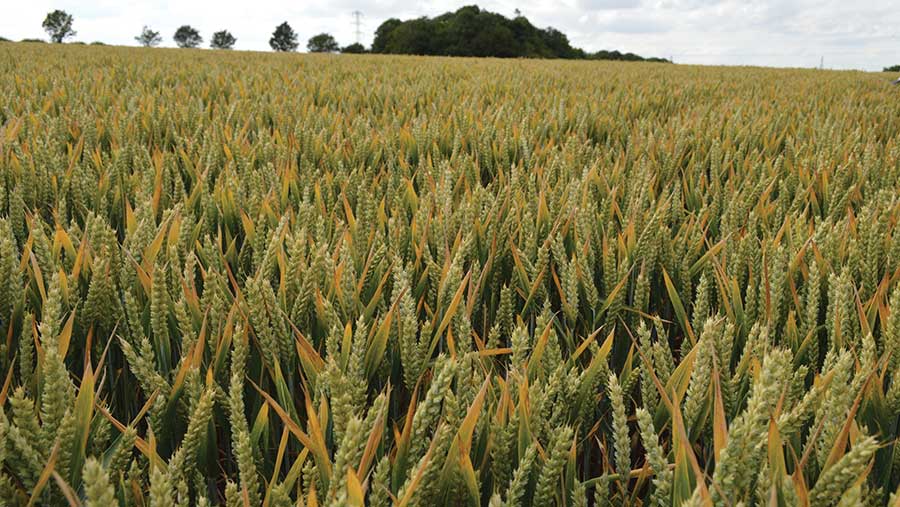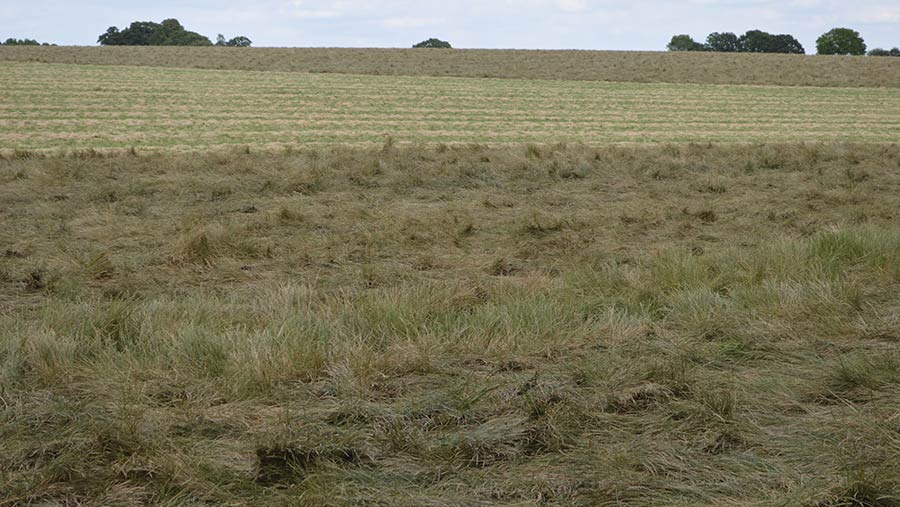Essex farm uses borage and herbage seed to fight blackgrass
 Borage crop © MAG/David Jones
Borage crop © MAG/David Jones Borage and herbage seed break crops have helped one heavy land Essex arable farm get on top of blackgrass, with double spring-sown breaks and low soil disturbance seen as the key in its grassweed battle.
The borage crop was introduced five to six years ago, and the farm is now hand-rogueing blackgrass in winter wheat crops.
See also: Why blackgrass is so bad in 2023 and what to do about it
In the past, a big chunk of wheat had to be abandoned and sprayed off with glyphosate.
Farm manager David Hall says both break crops of borage and herbage seed are profitable and fit in well with other crops on the farm, such as winter wheat and spring barley, after oilseed rape was abandoned a number of years ago for being too unpredictable.
“Borage is part of our blackgrass strategy, as it is spring-sown and, importantly, it is late spring sown,” he tells Farmers Weekly.

David Hall © MAG/David Jones
Double break
The borage crop follows spring barley in a double spring-sown break to allow plenty of time to control troublesome blackgrass, and borage gives an excellent entry for winter wheat in the farm’s spring barley-borage-winter wheat rotation.
The farm’s other rotation to control blackgrass includes a spring barley crop which is undersown with herbage seed, and then cropped for two seasons before returning to winter wheat.
Both the borage and herbage seed rotations have helped reduce blackgrass levels on the farm.
David manages 750ha of arable land for JE Hutley and Son and, in 2007, this family group took on 320ha of land at Hingston Farms, Cutlers Green, Thaxted, in north-west Essex, which used to largely grow winter wheat and rapeseed and had a big blackgrass problem.
The two rotations were introduced to this new land, and it resulted in a big reduction in blackgrass.

Siskin winter wheat © MAG/David Jones
This year’s borage crop was sown on 17 May and is set be harvested some 100 days later, when it is swathed and then picked up by the combine in late August to early September.
The crop is grown on contract, and the seed is used in the pharmaceutical and healthcare markets.
Ed Hutley, who is a partner in the family farming business and also a partner at agronomy consultancy group Ceres Rural, says borage can give the same gross margin as top oilseed rape crops.
He believes it is key, along with spring barley, in the farm’s blackgrass battle.
“The double spring break is very important, as we need to break the cycle of blackgrass, and borage is profitable and a good entry for winter wheat,” he says.
Borage control
Although borage can persist in following crops, Ed says good control can be achieved in the following winter wheat crop by applying the widely used pre-emergence residual herbicide diflufenican, while sulfonylurea herbicides also give good control.
The farming group also uses its second crop rotation, which includes a spring barley crop followed by two years of herbage seed, before returning to winter wheat to help control blackgrass.
David says while the double spring break of spring barley and borage works very well, the spring barley undersown with herbage seed is also useful.
It means the soil is undisturbed for two-and-a-half years from drilling the spring barley until sowing a winter wheat crop after the herbage seed crop.
“In a bad blackgrass situation, the double spring break does have the edge, but the herbage seed is still a very useful crop for blackgrass control,” he says.

Blackgrass control in herbage seed © MAG/David Jones
The farming business has been growing herbage seed since the 1950s and has 120ha of perennial ryegrass in the ground, grown for the amenity grass-seed market.
David says one grass field last year produced the highest gross margin across the farming group.
The farming operation has been growing borage for the past 20 years, but only for five to six years at Hingston.
There is 200ha being grown this season, and with a budgeted yield of 400kg/ha at a price of about £4,000/t and generally low input levels, it can produce good gross margins.
The borage crop is preceded by Laureate spring barley, grown with just 94kg/ha of nitrogen fertiliser and aimed at the malting market.
It is sold through Camgrain, and winter wheat varieties Siskin and Dawsum are also sold through the farming co-operative.
Both speakers were attending a Ceres Rural “On the Farm” event at Hingston Farms, near Thaxted, Essex, in July.

